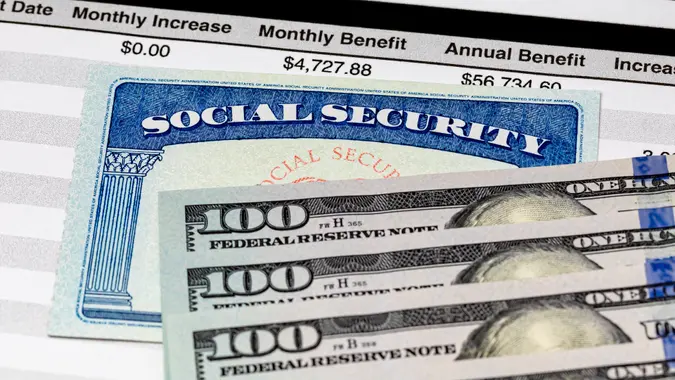Social Security Literacy: Are SSI and SSDI the Same Thing?

Commitment to Our Readers
GOBankingRates' editorial team is committed to bringing you unbiased reviews and information. We use data-driven methodologies to evaluate financial products and services - our reviews and ratings are not influenced by advertisers. You can read more about our editorial guidelines and our products and services review methodology.

20 Years
Helping You Live Richer

Reviewed
by Experts

Trusted by
Millions of Readers
Social Security Disability Insurance (SSDI) and Supplemental Security Income (SSI) are both programs under the Social Security Administration (SSA) that pay benefits to those who are disabled or blind. The SSI is broader in scope than the SSDI, and may offer coverage to seniors in need. While they may seem very similar, however, the programs have different eligibility requirements.
SSDI
SSDI provides benefits to those who can no longer work due to a disability, and to their dependents. To qualify for SSDI, the SSA says that recipients must meet the definition of disability under the Social Security Act.
According to the SSA, a person is considered disabled if they can’t work due to a severe medical condition that has lasted (or is expected to last) at least one year — or if the condition is expected to result in death. The condition must also prevent them from doing work they did in the past or from adjusting to new work.
AARP says SSDI is an earned benefit, similar to Social Security retirement benefits. You qualify by working and paying into the system through Social Security taxes. Additional benefits can also be paid to spouses and children of disabled workers. Disabled children can also qualify for SSDI based on a parent’s record.
Payment amounts are based on earnings history. The estimated average monthly SSDI benefit is $1,358 in 2022, AARP reports.
SSI
SSI is a needs-based program that pays benefits to those who meet the SSA’s definition of disabled, are blind or are 65 and older. Recipients must have very limited income and assets that must not exceed a certain threshold. SSI is not linked to work history, which means you can still qualify for SSI even if you never paid Social Security taxes.
AARP indicates that the current maximum federal SSI payment is $841 a month for an individual and $1,261 a month for a couple receiving benefits jointly. Income up to those levels may result in a benefit reduction and income above those levels can disqualify you from the program. The resource limit is $2,000 for an individual and $3,000 for a couple.
SSI is financed by the general funds of the U.S. Treasury, such as personal income taxes, as well as corporate and other taxes.
More From GOBankingRates
 Written by
Written by  Edited by
Edited by 
























